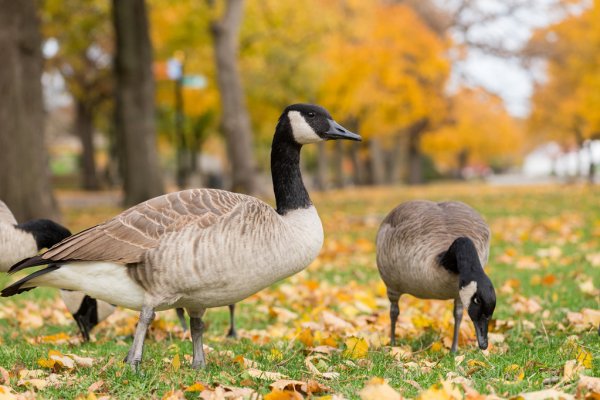Discovering a nest or a family of Canada geese on your property is usually not something that most homeowners want. The population of Canadian geese has gone up in recent years, making the possibility of a pair of geese choosing to nest on your property even more likely. Homeowners can use smart strategies and help from a wildlife control company in North York like Skedaddle Humane Wildlife Control to prevent uninvited geese from nesting too close to home.
While some birds keep themselves, their nests and young hidden away from humans, Canada geese tend to be more fearless. Sometimes these geese can get aggressive and territorial of their space as well. They are attracted to areas that are near water, such as ponds, lakes and drainage areas. They are also attracted to wide, green open spaces, like mowed lawns, golf courses and parks. People sometimes see Canada geese as a nuisance. When they spend a lot of time in one area, they cause many problems, such as:
- Leave a lot of messy droppings
- Their feces can also cause bacteria to grow in bodies of water
- They can be loud, with distinctive, noisy honking sounds
- They eat a lot of grass rapidly while feeding and can easily ruin or damage a lawn
- Canada geese are larger than some small children and pets and can sometimes approach them and try to bite or chase if they feel threatened.
Nesting Habits of Geese
Nesting season for Canadian geese begins in spring and may last throughout the months of March, April and May. Geese pairs mate for life, and they like to return to the same nesting site each year. They are ready to start breeding at age 3. Some species of Canada geese will migrate south in the winter, and other, resident species will stick around all year. Geese build their nests in sites that are close to the water. When a female goose lays her eggs, she will be the one to incubate the babies until they hatch about a month after laying. Her mate will typically be nearby, guarding the nest against potential predators or people. The nests produce on average about five or six goslings. Once the goslings hatch, they are with their parents for about one year. During the month of nesting and the 10 weeks of time after hatching when the goslings are at their most vulnerable and can’t fly, the adult pair of parents vigorously defend their young from any possible threat.
How To Discourage Geese Nesting
While some people enjoy seeing geese on their property, many homeowners prefer them to nest somewhere else. One strategy is trying to prevent geese from building a nest in early spring in the first place. Survey your property and build a barrier around any ponds or other bodies of water to keep geese out and to discourage them from nesting. Fencing must be high enough to detract geese from the water.
Already welcoming ducks in your pond or feeding geese on your property significantly increases the chances of them building a nest, so avoid those practices to keep them away. Homeowners with dogs, noisy tractors or ATVs and visual deterrents like flags and balloons may also find that geese are less likely to make a home nearby. The best strategy for nesting prevention is to consult with a skilled wildlife control company to develop additional tactics to keep geese from moving in.
If you have a problem with any type of wildlife like geese, raccoons, mice or skunks using your property, it’s time to take some preventative steps so they move on to another more appropriate place. Contact Skedaddle Humane Wildlife Control to help with effective removal or to learn more about additional ways to keep animals from damaging your lawn and other areas of your property.



